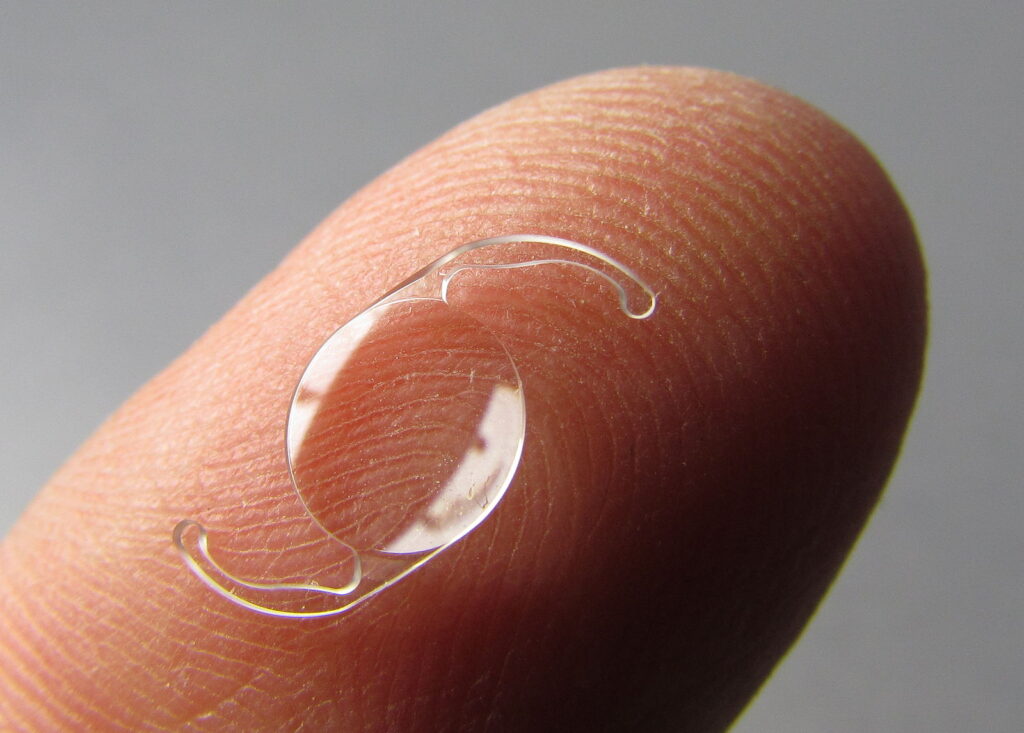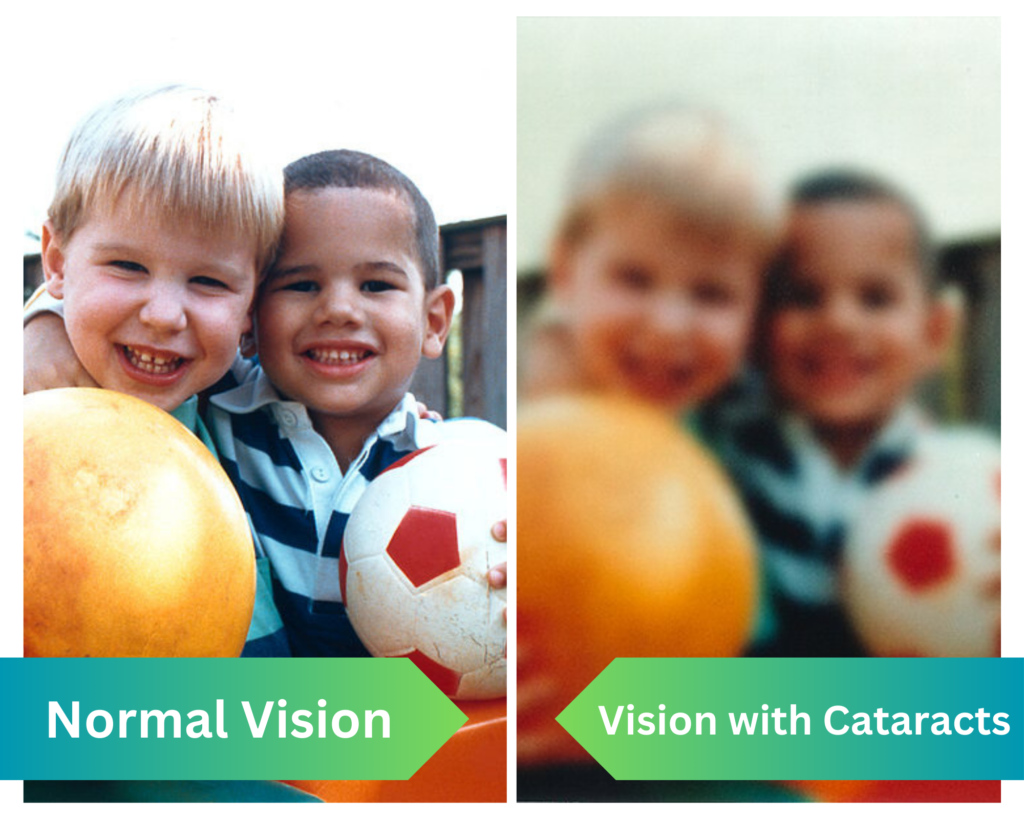Disparities in Cataract Care are a Sorry Sight
(Posted on Saturday, October 21, 2023)

This article was published on Forbes on 10/16/2023.
This story is part of a series on the current progression in Regenerative Medicine. This piece is part of a series dedicated to the eye and improvements in restoring vision. It also marks part four of a four-part series on cataracts.
In 1999, I defined regenerative medicine as the collection of interventions that restore to normal function tissues and organs that have been damaged by disease, injured by trauma, or worn by time. I include a full spectrum of chemical, gene, and protein-based medicines, cell-based therapies, and biomechanical interventions that achieve that goal.
If you’ve read any previous pieces in this series, you know that cataracts are a critical issue as they are the leading cause of blindness globally. This fact is interesting since cataract surgery is one of the most cost-effective medical interventions currently available. Since cataract surgery has been proven safe and effective in restoring vision, Why do cataracts continue to be a global vision crisis?
To answer this question, it’s essential first to clarify what disparities exist around cataract care. First, cataract disease is disproportionately prevalent in countries with lower socioeconomic status, leading to a significant inequality gap. Second, developing nations face lower cataract surgical rates than their developed counterparts, meaning fewer surgeries occur in the countries that need them most. These alarming statistics highlight the issues of limited healthcare accessibility and inadequate community outreach efforts.
The cost of cataract care varies significantly, leading to disparities in treatment access. In the United States, bilateral cataract surgery can cost anywhere between $2,410 to $5,243. However, the same surgery can cost $7,300 in Spain, $4,300 in Turkey, and around $1,500 in China. In Colombia, the surgery costs around $2,000. In India, the average cost ranges from $41 to $125. Additionally, India’s Aravind Eye Care Systems offers no-cost options to patients through their pay-what-you-can and “no questions asked policy.”
India Shows Cataract Care Shouldn’t Cost an Arm and a Leg
In the previous article of this series, we explored the Aravind model and the reasons behind its success. The Aravind model relies on three primary factors to be effective. Firstly, the hospital sees many patients, which allows them to benefit from economies of scale. Secondly, they have reduced material costs by creating manufacturing channels for operation materials such as lenses and sutures. Thirdly, Aravind prioritizes the patients and community and organizes outreach events and vision camps while subsidizing patients’ travel costs to the surgery centers.
It is worth noting that India has also developed an effective cataract surgery procedure. Each surgery costs $29.02, which includes direct and indirect expenses. Patients have a range of options for intraocular lenses, including an affordable Indian aspheric lens priced at $12.80 and an internationally produced aspheric lens valued at $96.00.

Labor costs are minimal, with surgeons charging only $2.25 per patient and other staff charging $4.81 per patient. In contrast, in the US, Medicare pays $1,766 for the surgery center and $760 per surgeon. Also, the average surgery time in the US is 21 minutes, while at Aravind, it only takes 6 minutes.
Aravind is one of many hospitals operating with this model in India. Others, such as LV Prasad, have also found the secret to cataract surgery success. The hospitals can offer free or low-cost, high-quality healthcare to 50-60% of their patients by using the profits earned from the 40-50% of patients who pay for their services.
It is only natural to see the success in India and wonder why it is so expensive to get this same surgery here in the United States and why the model isn’t implemented in more countries.
Cataract Care the American Way
US healthcare payers provide financial coverage for medical services by compensating providers, negotiating lower prices, and promoting preventative care. Cataract treatment and surgery can be expensive, with varying coverage. Medicare covers only 80% of senior citizens.
According to Medicare’s national average, the price of a surgeon’s time in the United States for both ambulatory and hospital settings is around $746 for a patient. Facility fees can range from $1,000 to $2,100, and in addition to these, patients have to pay for supplies and materials like lenses, as mentioned earlier. For those without the help of insurance, the surgery costs around $4,000.
Several factors contribute to the overall cost of cataract surgery in the US. These include the surgical facility, the chosen procedure, the type of intraocular lens (IOL) employed, the utilization of technologies such as laser assistance, the qualifications of the surgeon, the medications administered on the day of the procedure, the inclusion of additional eye correction services, and the possibility of post-surgical complications.
Suppose the surgery is complete within 20 minutes without any complications. In that case, the cost can range from $46 for a single surgeon with an available anesthesiologist to $120 for two surgeons and a dedicated anesthesiologist. In the United States, this amounts to 1.2 million physician hours or 132 million dollars (assuming an average cost of $110 per hour), almost twice as much in Europe.
Regardless of the reason behind the expenses related to cataract surgery, these higher prices lead to low rates of corrective surgery, meaning more people are living with untreated cataracts. About 5 million cataract surgeries occurred in the US in 2022, while India boasts over 8.34 million during 2022. China, another major country with yet another approach to cataract care, lags behind the US and India in cataract surgical rates.
China’s Model of Cataract Care
Despite the Chinese government’s notable efforts, China’s cataract surgical rate is significantly lower than its poorer neighbors, such as India and Vietnam. The main reason for this is the lack of trained surgeons. Despite having over 36,000 ophthalmologists in China, only one-third are qualified to perform cataract surgeries independently. This shortage of ophthalmologists in China creates a need to improve the country’s ophthalmic service capacity to meet the demand for cataract surgeries.
The cost of surgery in China can vary from $536 to over $1000. While this may seem like a reasonable price here in the United States, many are unwilling to pay this price in China. A study assessed the impact of Helen Keller International’s (HKI) low-cost surgery program and found that 80% of the participants expressed willingness to cover the surgical expenses.
However, only 56% of them were willing to pay $66 or more, which is the subsidized price offered by HKI. Visually impaired individuals were more inclined to pay for the surgery, with an average contribution of up to $32. This information highlights the significant financial barrier posed by the high cost of cataract surgery in rural China, especially compared to the average surgery cost in the country.
A study published in the BMC Public Health Journal suggests that the increased costs of cataract surgery in China are similar to those observed in the United States and India, mainly due to the type of intraocular lens (IOL) used. The research also reveals that the variation in total patient costs in China is primarily attributed to the expense of different IOL types.
The multi-focal and adjustable intraocular lens costs over $1,100, making it too expensive to be reimbursed. Consequently, most patients opt for a single-focused intraocular lens. The study focused primarily on surgical variations in four hospitals across China. The providers did not use multi-focal or adjustable intraocular lenses in three of the studied hospitals.
All four providers used imported lenses. Although domestic lenses were available, these hospitals did not use them. This was because patients widely believed imported lenses offered better quality than domestic ones.
Still, cost and lack of trained professionals are only one piece of why China and Asia experience lower surgery uptake rates. Another component is culture. In some Asian developing countries, the head of the household often decides whether to undergo cataract surgery due to cultural norms. Additionally, older adults are often reluctant to receive treatment due to fear and unfamiliarity with the procedure. This fear can lead to delayed diagnosis of cataracts, resulting in poorer outcomes upon surgery.
The Ramifications of Treating or Not Treating Cataracts
It is interesting to note that treating or not treating cataracts can have a significant economic impact. When discussing health issues and disparities, we often overlook a healthier population’s impact on generating more resources through gainful employment. This impact is part of why William Nordhaus, the Nobel Prize-winning economist, has suggested that 50% of the wealth created in the United States in the 20th century came about due to advances in health and healthcare.
One analysis suggests that cataract surgery in the first eye can provide a monetary return on investment of $372,543 for the direct medical costs of surgery expended in 2018. Another similar analysis suggests that eliminating cataract-related blindness and low vision in India will require an investment of approximately $2.6 billion but would result in a net gain of $13.5 billion. Furthermore, the contribution to a country’s GDP strongly suggests that cataract surgery makes the nation wealthier.

Cataract treatment impacts more than just economies. It also has a significant public health impact. Every year, over 26 million people who were either blind or had low vision regain their sight through cataract surgery, dramatically improving their quality of life and independence. Moreover, cataract surgery reduces the risk of falls in elderly patients, leading to fewer hospitalizations.
Therefore, it is crucial to address the inequalities and make cataract surgery more accessible and affordable to enhance the health and well-being of people worldwide, particularly as the global population ages.
To learn more about the eye, read more stories at www.williamhaseltine.com

